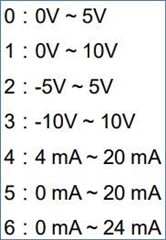There are two questions about DAC8775 initial Programming.
1. Pls help to check if below setup is correct?
DAC8775_WriteToRegister(0x01, 0x0001); // Reset Register
DAC8775_WriteToRegister(0x02, 0x0012); // Internal Reference 5V、When power OFF, both IOUT and VOUT are high impedance
DAC8775_WriteToRegister(0x06, 0x000F); // Select Buck-Boost Channel ABCD
DAC8775_WriteToRegister(0x07, 0x061F); // Buck-Boost Set +15V ~ -15V
DAC8775_WriteToRegister(0x03, 0x01E0); // Select DAC Channel ABCD
DAC8775_WriteToRegister(0x04, 0x0000); // Set for Voltage output 0 to +5 V (default) range
DAC8775_WriteToRegister(0x04, 0x1000); // Enable output
2. Are address 0x08 - 0x0A able to be calibration for each channel?
3. How to choice the each channel A B C and D? by address 0x3 or 0x6?
Regards
Brian


